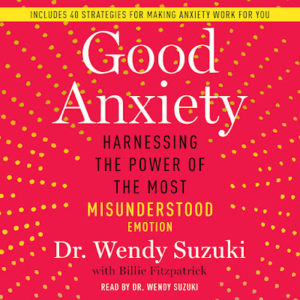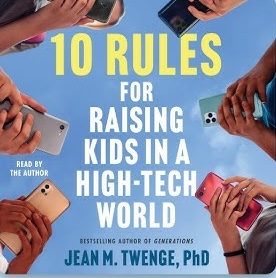

While emphasizing that anxiety falls along a spectrum, she does not minimize the clinical conditions of anxiety that are debilitating to the lives of many. Her descriptions are helpful heuristics to assist us in understanding what aspects of our anxiety may benefit from professional help. But, her approaches throughout the book may be applied anywhere along the spectrum from these severe situations to everyday anxieties. The framing of our events that lead to anxiety is flexible and can be tweaked offering us a reprieve from the perpetual anticipation of what could go wrong and even pave the way toward a more actualized self.
As educators our focus is too often on getting through a long list of endless tasks: grading, preparing, going to meetings, attending to parents, and of course still mindfully attending to students. But all these tasks bring with them some degree of uncertainty and anxiety: Will I get it done? What will they think? Do I know how to run a zoom call? Am I doing my job effectively? But we still push through, dismissing these emotions in favor of checking off another task as done. We imagine that getting tasks done will make us feel better, but things are never really ‘done.’
Suzuki recognizes that while we all experience anxiety, we seldom take the time to engage the emotion and give it the respect it deserves. Ignoring anxiety does not make it go away; it compounds until we fight, flee, or freeze – are we attending to these adaptive responses that tell us something is wrong? Even a persistent low level of anxiety has deleterious effects on our body and mind. If we do not respect anxiety, we virtually guarantee that we will not be performing at our best which can further drive rumination and further deleterious anxiety. This book is a guide on a journey to building a healthier relationship with our anxiety and incorporating our knowledge into our lives for our benefit.
Through her engaging and scientifically accurate descriptions of the physiological processes, she helps us see anxiety as a biological system that has evolved for our protection but is flexibly under our influence. Bringing together an array of up-to-date research, she integrates the neuropsychology of both top-down and bottom-up processes into a set of practices that allow us to take advantage of the neuroplasticity of the system: relaxing the body, calming the mind, redirecting and reappraising, monitoring responses, and learning to tolerate the uncomfortable.
Authentic personal and third-person narratives illustrate the lessons in this book in an accessible and engaging way. You will see yourself in the various scenarios having made similar choices increasing your understanding of your past and future actions, but also giving you insight into the actions of others, helping improve our lives and the lives of our students. The narratives clearly illustrate how, when harnessed, anxiety may help you achieve your goals if you listen and engage this emotion appropriately.
The final portion of the book gives us some valuable assessment tools to help us gain a more mindful awareness of our mental state. Reading this book gently brings anxieties into view, affording us the opportunity during its reading to work with our anxiety. These assessment tools take us full circle back to the contents of the book and the menu of strategies we can draw from to address our evolving processing of anxiety.
Over the last few years, but not isolated to them, anxiety has been on the rise: the pandemic, elections, tense race relations, changing political landscapes, and further global catastrophes. This barrage is complemented by our unfortunate practice of ‘doom scrolling’ generating a feedback loop that seems like an endless drive toward harmful anxiety. What will the world throw at me next, and will I be able to cope? Students, parents, and teachers are doing their best to work through this moment, but we have been ill-equipped. When reading this book, fill it with sticky notes and bookmarks encouraging a return to strategies for checking, evaluating, and adapting your relationship with anxiety. Suzuki offers a useful tool to help us all on the road to recovery and prepare our minds and bodies for challenges yet unknown.





